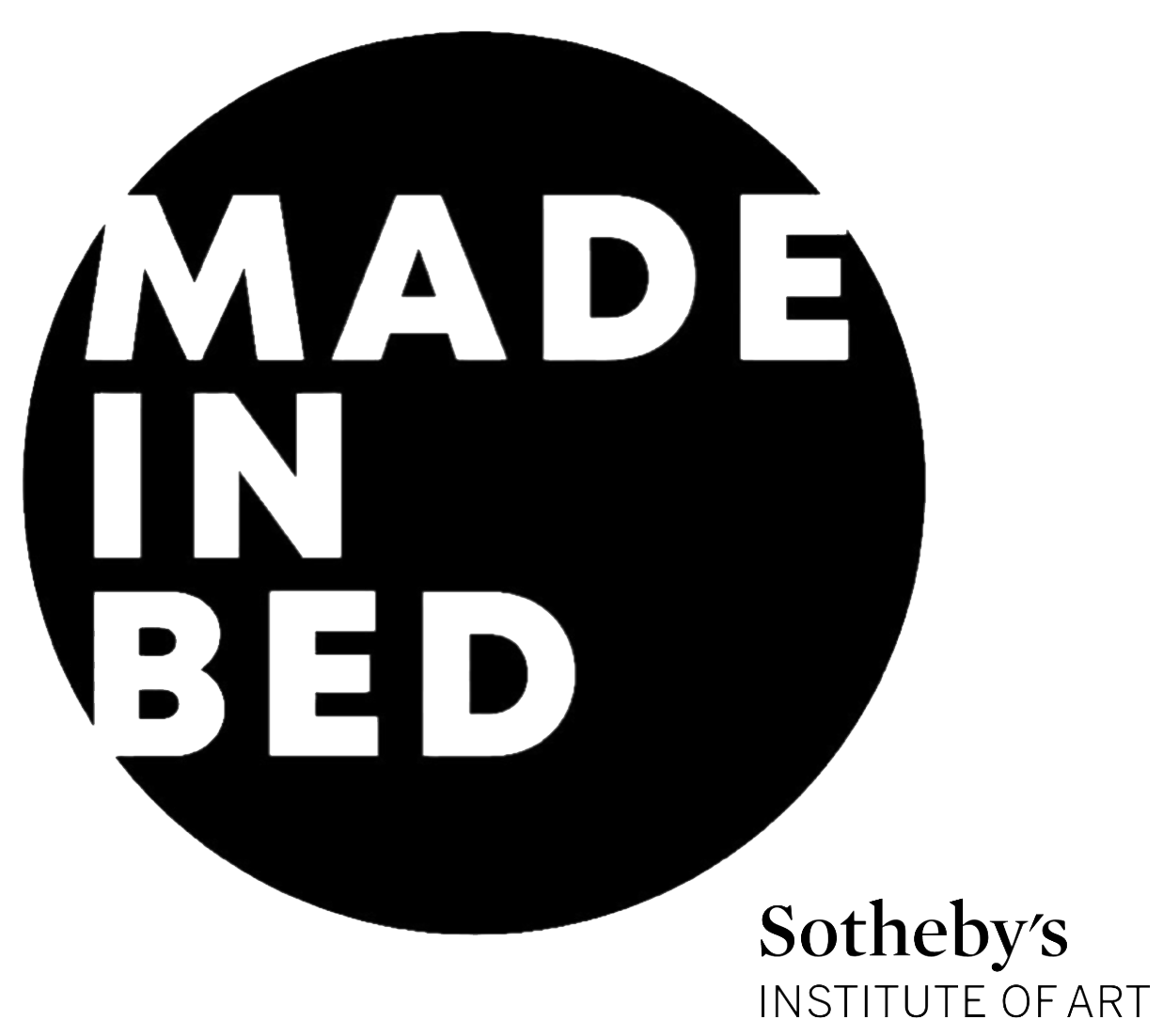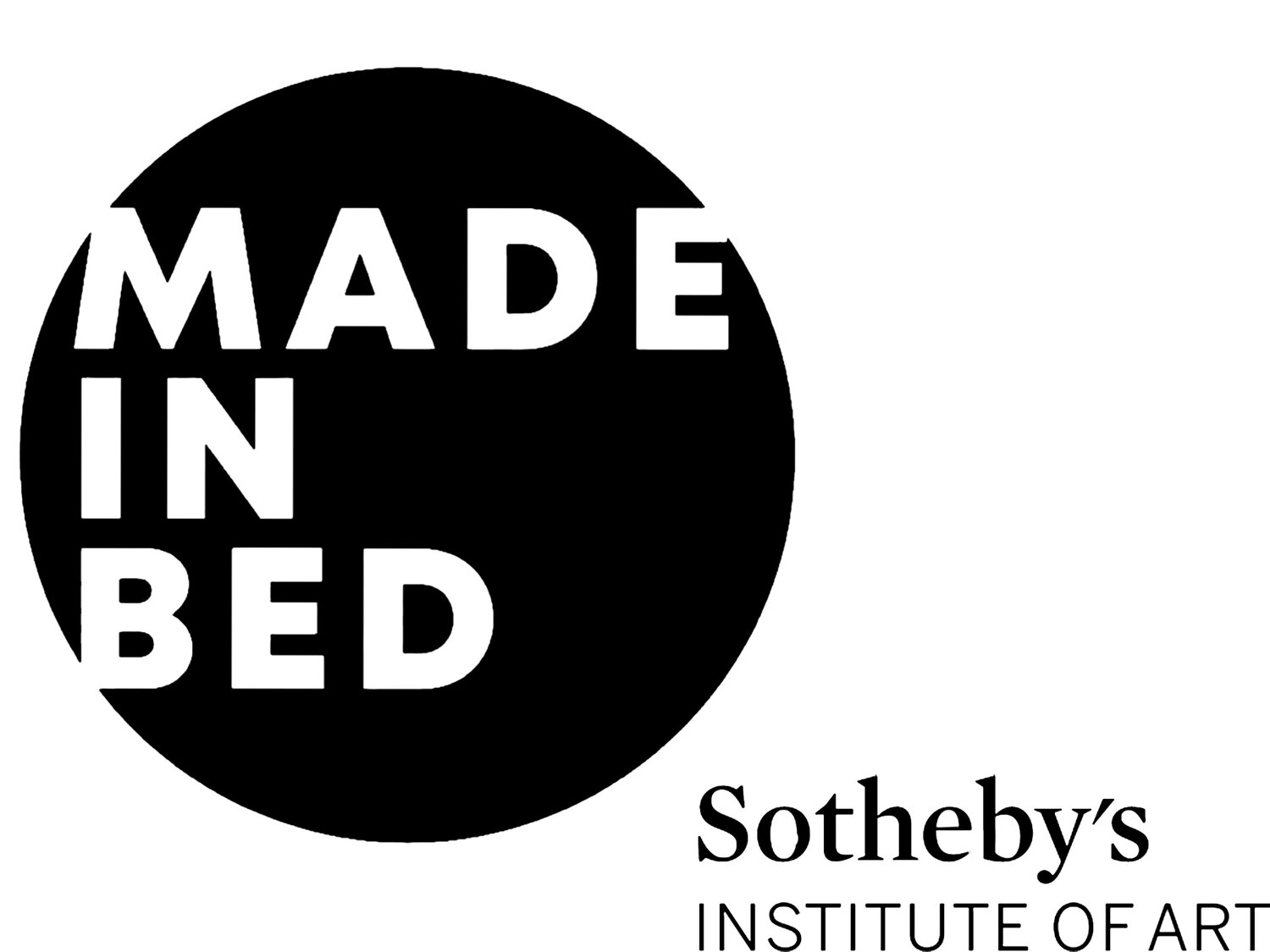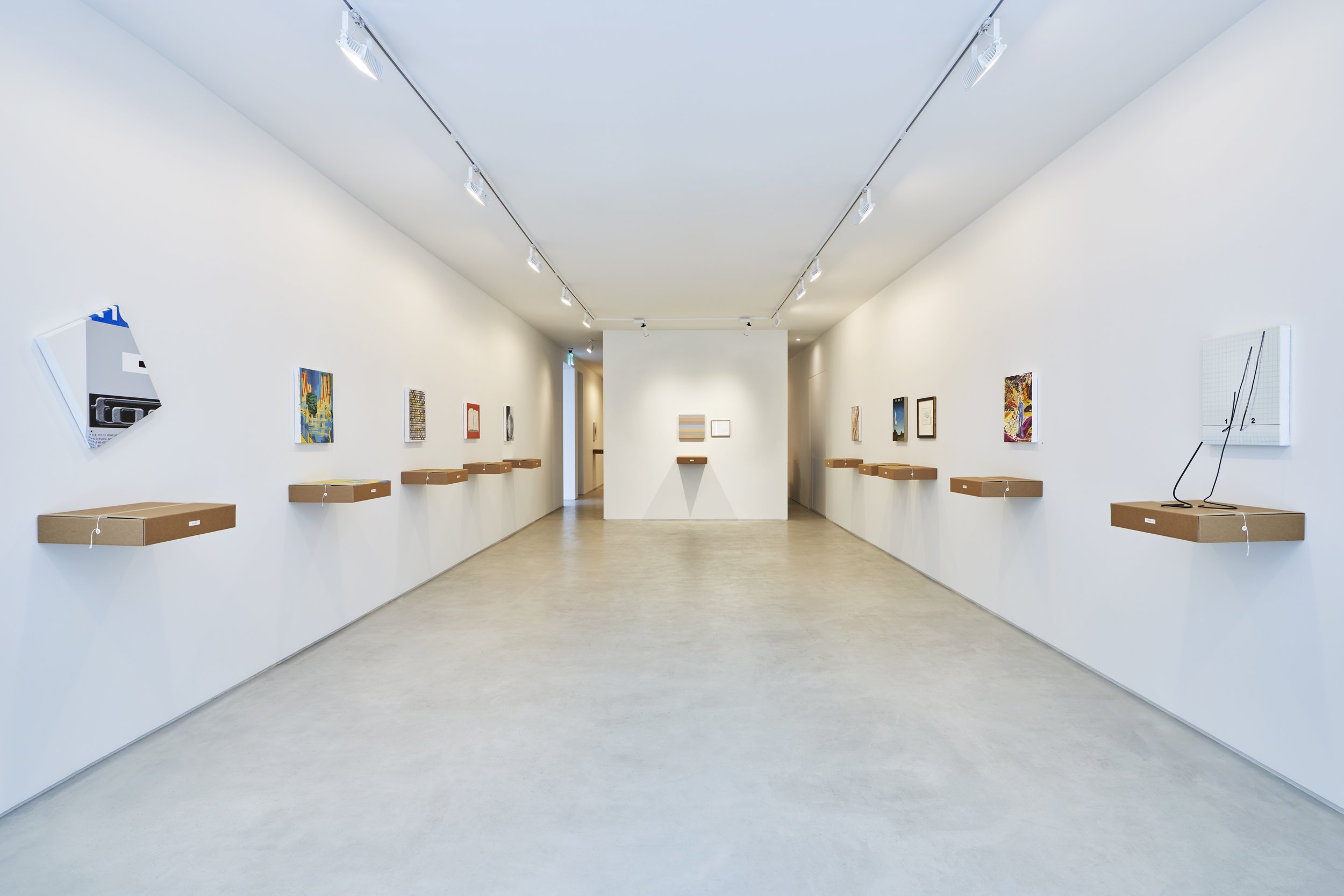Alice Kim in Conversation with the Unboxing Project
Minjin Chae (left) and Hyunjoo Byeon (right). Photo Courtesy: Unboxing Project.
What if the most powerful artworks weren’t monumental, but small?
Unboxing Project (UBP) challenges the dominance of spectacle in contemporary art by focusing on small-scale works that invite close attention and lasting reflection. Founded in 2022 by curators Hyunjoo Byeon and Minjin Chae, the project asks Korean artists across generations to distill their practice into compact works shaped by a specific theme.
What makes UBP unique isn’t just the small size of the works, but how they are made to highlight the physical movement of art. Each artist is commissioned to create a piece that fits inside a custom-designed box, which often becomes part of the artwork itself. These boxes travel from the artist’s studio to the exhibition space, and the act of unboxing becomes part of how the work is presented and understood. UBP turns the path of the artwork—its making, its movement, its arrival—into part of its meaning.
Each edition introduces a new format—beginning with custom-made boxes and, most recently, scrolls housed in cylindrical cases. Previous editions took place in Seoul and Los Angeles; the latest, MESSAGE, was held at König Galerie in Berlin’s former Telegraphenamt, once home to the city’s pneumatic mail system.
Byeon is a Berlin-based curator and publisher who has worked with Esther Schipper, Kukje Gallery, and Art Sonje Center. She holds an MFA in Curating from Goldsmiths, University of London.
Chae is based in Seoul, where she runs Perspectrum Art Advisory. She earned her MA in Art Business from Sotheby’s Institute of Art, New York. Together, they bring a thoughtful, focused approach to a project that has quickly become a reference point for Korean contemporary art. If there’s a blue-chip or on-trend Korean artist on your radar, chances are—they’ve already been part of UBP.
I spoke with Hyunjoo Byeon and Minjin Chae about how the project began, how it has grown, and how their collaboration works.
Box in a Valise (From or by Marcel Duchamp or Rrose Sélavy), 1935-41. Photo Courtesy: Museum of Modern Art.
Poster of MESSAGE. Photo Courtesy: Unboxing Project.
Alice Kim: How did you first meet, and what prompted you to begin working together? Could you share the origins and inspirations behind the Unboxing Project?
Minjin Chae: We first met during a meeting with the director of Esther Schipper Gallery in Seoul, where Hyunjoo had accompanied her. We kept in touch, visiting exhibitions together while Hyunjoo was working independently as a curator. Later, when I was invited to curate an exhibition at New Spring Project, I proposed co-curating with Hyunjoo. The inspiration for the project came from the unique allure and artistic value of small-scale works. These pieces condense the artist’s creative energy into a compact form, powerfully capturing attention and leaving a lasting impression. Although we didn’t initially intend it to be a long-term series, the deep resonance the project had with both audiences and artists encouraged us to continue.
Hyunjoo Byeon: As Minjin mentioned, we first met in 2019 during my business trip to Seoul. We stayed connected, and during the pandemic, we discovered that we shared a similar sensibility and taste in art. When Minjin was invited to curate at New Spring Project, she suggested we collaborate. Despite having relocated back to Berlin in 2022, I decided to take part. Our mutual interest in the artistic potential of small-scale works became the starting point for the UBP.
AK: What drew you to small-scale artworks as a curatorial focus? Was there a particular moment that shaped this interest in scale and intimacy?
MC: I once encountered a small On Kawara painting—smaller than A4—positioned between monumental modernist canvases. Despite its size, it radiated a striking artistic aura. Kawara’s lifelong practice was condensed into this tiny frame, and it left a deep impression on me. Inspired by this, I designed a custom box—referencing the boxes Kawara created to house his daily works—as a commission container. These boxes travel between artists’ studios, galleries, and collectors’ homes, and each time they are opened, a new stage of the work’s life is revealed: creation, exhibition, and collection.
On Kawara, MAR. 15, 1970 (“Expo ’70 opened his doors to the public this morning. For six months, the festival will continue on its 815-acre site in Senri Hills north of Osaka, Japan.”). Photo Courtesy: the artist and David Zwirner, New York/London.
HB: One of the works that has been engraved in my mind most deeply is a small drawing by Bahc Yi-so from 1986. In it, he wrote, “Every time I paint, I hope others will like it. And yet, I can’t help but feel disheartened, wondering what a painting quietly hanging on a wall can really do in today’s world.” That quiet reflection has resonated with me far more than many of the grand, spectacular works I admire from a distance. It made me want to explore and share that sense of intimacy—how something small can still hold immense emotional and conceptual weight. The idea of commissioning new works within a small-scale framework was a way to see how different artists would respond to that challenge, and to invite audiences into a more focused, personal encounter with each piece.
AK: The current edition, MESSAGE, is hosted at the historic Telegraphenamt. Was König Galerie chosen from the outset, or did the curatorial direction evolve in response to the site?
MC: The venue played a major role in shaping this edition. A few years ago, I introduced the project to Johann König, and he showed great interest. He suggested exhibiting at the Telegraphenamt—a former pneumatic post office. He felt the space’s historical character could add further meaning to the exhibition, and we agreed.
HB: The Telegraphenamt operated as a telegraph office until 1992 and remained vacant until it was repurposed into a hotel in 2022. König Galerie opened there in December 2023 with a Karl Horst Hödicke exhibition. As soon as we started discussing using the space for MESSAGE, I began researching its past. The building's history as one of Europe's largest and most renowned pneumatic mail facilities, its role within Berlin's 400km communication network, and the eventual fading of this communication method into history, directly influenced our approach to the project. The building’s architectural and historical resonance became integral to the project’s narrative.
König Telegraphenamt. Photo Courtesy: König Galerie.
Installation view of MESSAGE. Photo Courtesy: Daham Choi and the Unboxing Project.
AK: The scrolls housed in cylindrical cases feel like a poetic nod to the pneumatic tube system. How did this format come about, and how do you expect Berlin audiences to receive it?
MC: We reimagined our signature box format to echo the pneumatic mail capsules, adapting it into cylindrical cases. We took inspiration from traditional scrolls used in East Asia—forms that functioned both as letters and canvases. Since most of our participating artists work with canvas, we developed scrolls backed with canvas fabric rather than hanji paper. We believe this fusion of Eastern visual traditions with contemporary artwork—presented in a space deeply rooted in Berlin’s history of communication—will appeal to audiences on multiple levels.
HB: As Minjin mentioned, the scroll format references old pneumatic mail tubes. The idea behind the project is to visually represent the journey of the artwork—it starts by being shipped to the artist in a box, is then unboxed, and ultimately displayed at the exhibition. We also found it interesting that the scroll format has a universal appeal. I believe that audiences in Berlin, particularly those familiar with the history of pneumatic mail, will easily grasp the concept and connect with the project.
Installation view of MESSAGE. Photo Courtesy: Daham Choi and the Unboxing Project.
AK: How were the participating artists selected?
MC: Both curators nominated artists whose work we had experienced firsthand. We discussed which artists could respond best to the edition’s theme and format, ensuring a balanced representation across generations. We focused on highlighting artists whose practices we felt deserved broader attention through this project.
HB: We conducted in-depth research on the artists' practices and selected those we believed could bring a compelling response to the commission.
AK: How did the artists respond to the format and theme? Were there any surprising directions? What kind of dialogue did you have with them, and how did you balance structure with freedom?
MC: From the early planning stages, we communicated closely with each artist about the format, size, and theme. While the commission provided a set framework, we encouraged artists to work as freely and independently as possible. We also emphasized the importance of each artist’s voice standing out in a group exhibition. Over time, we’ve found that when the conceptual and formal structure is clearly communicated, the artists’ engagement and the depth of the final work tend to increase.
HB: Our approach is to give the artists a great deal of autonomy while ensuring they clearly understand the exhibition’s concept. We provided a designated framework, outlining what they needed to consider when working with different mediums. We also engaged in individual discussions with each artist, addressing their specific requests. For example, Suyoung Kim wanted to gain a current sense of Berlin, given the exhibition's location, so I sent her some photos of how I see the city. I also shared images of the pneumatic post machines still present in the Telegraphenamt building with all the artists. While we base our commissions on insights gathered through research, the artists always surprise us with creative expressions that exceed our expectations.
Suyoung Kim, Work No. 75, 2025. Photo courtesy: Euirock Lee, the artist, and UBP.
AK: How has the UBP evolved since its launch in 2022?
MC: Our approach to artist selection has developed significantly. Since the first edition, we’ve made efforts to involve artists from a wider range of generations, and we’ve become more thoughtful about who can best interpret each edition’s concept. From the second edition onward, we’ve prioritized direct engagement—holding individual meetings with every participating artist to foster meaningful dialogue. This has helped artists bring their own unique interpretations to the framework.
HB: Up to this fifth edition, we intentionally avoided repeating artists, aiming to generate fresh dynamics with each iteration. However, the cylinder scroll format posed a particular challenge, and we felt certain artists who had worked with us before could bring an especially strong vision. This curatorial process has deepened my understanding of how artists adapt their visual language within specific constraints—and how long-term collaboration can nurture more nuanced, layered works.
Exhibition view of UNBOXING PROJECT: Today at New Spring Project, Seoul, 2022. Photo Courtesy: Euirock Lee and New Spring Project, Seoul.
AK: How do you assess the audience and artist response so far? What do you hope people take away from MESSAGE?
MC: What made this edition particularly meaningful was that the format of the commissioned works reflected the historical context of the exhibition space. Following our edition in LA, this Berlin edition showed the strong interest international audiences have in contemporary Korean artists. I hope this project invites reflection on the enduring value of art and the deeper meaning of communication.
HB: This edition has been particularly interesting because it transcended the usual constraints of size and format, incorporating a rich historical context. As a curator based in Berlin, I hope it demonstrates that Korean artists can be presented in a new and exciting way, moving beyond the typical national showcase. It’s significant to me that this project shows the depth and relevance of contemporary Korean art in an international context.
AK: What role do you think projects like UBP play in shaping transnational conversations around contemporary Korean art?
MC: Korean contemporary art has already garnered attention in the international art world—albeit centered on a limited number of artists. I believe this recognition will expand across more artists and generations. Unlike large-scale biennales or star-focused art fairs, we aim to spotlight the present moment of Korean art through clear themes and innovative curating. Though small in scale, we hope our dense, thoughtful exhibitions contribute meaningfully to a deeper, more stable presence for Korean contemporary art abroad.
HB: Promoting and managing a smaller project like this, especially with a limited budget, can be challenging—particularly when compared to government-backed initiatives. However, our goal is to create a well-curated, impactful exhibition that resonates deeply with the audience. I reckon there’s a noticeable difference in how contemporary Korean art is perceived within Korea versus its reception on the international stage, even though it's gaining more attention.
The shift I noticed between my time studying curating at Goldsmiths in the mid-2000s and when having moved to Berlin in 2018, is huge. Despite this growth, contemporary Korean art still isn't mainstream internationally, and to strengthen its global presence, we need to focus on building a robust infrastructure rather than just supporting a few star artists.
AK: Lastly, what advice would you offer emerging curators hoping to build long-term collaborations?
MC: Constant communication is crucial for understanding each other’s ideas clearly. To sustain long-term collaboration, I believe it’s most important not to lose the passion and purpose that launched the project in the first place.
HB: I’ve frequently co-curated exhibitions since the start of my career. It’s a great model because it allows curators to complement each other’s strengths and offset weaknesses. With a group exhibition like the UBP—often featuring 20 to 30 artists—co-curation is essential. As the project evolves, so do the collaborative dynamics. You need flexibility and readiness to adapt at every stage.
AK: What’s next for the UBP?
MC: Each year, we’ll continue introducing new artists and new works through different themes and formats. Thanks to the conceptual and physical flexibility of the UBP, we plan to expand to major global cities of artistic significance steadily.
Many thanks to Minjin Chae and Hyunjoo Byeon on behalf of MADE IN BED.
To learn more about the Unboxing Project, connect via Instagram.
Alice Kim,
Interviews Co-Editor, MADE IN BED












